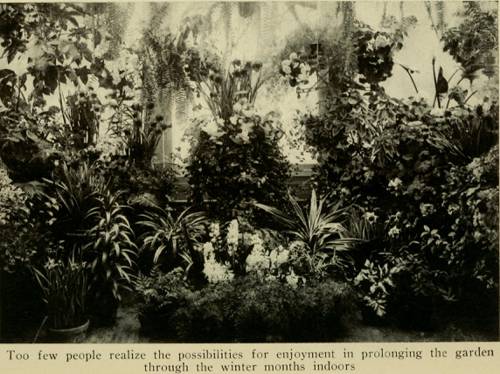
FAQ About Indoor Plant Regeneration Methods

What are some common indoor plant regeneration methods?
Common indoor plant regeneration methods include pruning, repotting, and using growth stimulants. Pruning involves cutting back parts of the plant to encourage new growth. Repotting is done to provide fresh soil and more space for root development. Growth stimulants, such as rooting hormones, can be used to enhance root growth and plant health.

How does pruning help in regenerating indoor plants?
Pruning helps regenerate indoor plants by removing dead or overgrown branches and leaves. This process stimulates the plant to produce new, healthy growth, potentially leading to a fuller and more vigorous appearance. By directing energy away from the older parts, pruning encourages the plant to focus on developing new shoots.

What is the best time to repot indoor plants for regeneration?
The best time to repot indoor plants is during their active growing season, typically in spring or early summer. This timing allows the plants to quickly acclimate to their new environment and supports optimal root expansion and foliage growth. Avoid repotting during dormancy, as this can stress the plants and inhibit recovery.

Can growth stimulants be used on all types of indoor plants?
While growth stimulants can be beneficial for many indoor plants, it's important to choose the right type and dosage for each species. Some plants might be sensitive to certain chemicals, so it’s best to research the specific needs of your plant before application. Always follow the manufacturer’s instructions to avoid over-fertilization or harm to the plant.

How do you repot an indoor plant to encourage regeneration?
To repot an indoor plant, first choose a pot that’s slightly larger than the current one. Gently remove the plant from its original pot, shaking off excess soil from the roots. Trim any damaged roots, then place the plant in the new pot with fresh potting mix. Water thoroughly to help the plant settle in the new environment.

What is the role of sunlight in plant regeneration?
Sunlight plays a critical role in plant regeneration by providing the energy necessary for photosynthesis, which fuels plant growth. Adequate sunlight ensures that the plant has enough resources to develop new tissues and repair damaged areas. For indoor plants, positioning them near a window or providing artificial light can support their regenerative processes.

Are there specific cutting techniques for plant regeneration?
Yes, there are specific cutting techniques that can enhance plant regeneration. For example, making cuts just above a node (the point where leaves are attached) can encourage branching. Using clean and sharp tools prevents damage and minimizes the risk of disease. Proper cutting angles and techniques help the plant focus on growing new shoots effectively.

How often should you prune indoor plants for optimal growth?
Pruning frequency depends on the type of plant and its growth rate. Generally, pruning once or twice a year during the growing season is sufficient for most indoor plants. Regular inspection for dead or diseased parts can also guide intermittent pruning to promote sustained health and growth.

What are rooting hormones, and how do they work?
Rooting hormones are compounds that promote root growth, often used when propagating cuttings. They contain auxins, which are plant hormones that stimulate root development. By applying these hormones to cuttings, gardeners can enhance root formation and increase the chances of successful plant regeneration.

Can water propagation help in regenerating indoor plants?
Yes, water propagation is a method that can help regenerate indoor plants. By placing cuttings in water, roots can develop before planting in soil. This technique is particularly useful for plants with soft stems. It allows you to visually monitor root growth and ensure that a healthy root system forms before transitioning to soil.

What are some signs that an indoor plant needs pruning or repotting?
Signs that an indoor plant needs pruning include yellowing or dying leaves, sparse foliage, and overcrowded branches. A plant may need repotting if you notice roots growing out of the drainage holes, stunted growth, or water running straight through the pot without being absorbed. Acting on these signs can help rejuvenate the plant.

How does humidity affect indoor plant regeneration?
Humidity can significantly affect indoor plant regeneration. Most houseplants prefer moderate to high humidity levels to thrive, as it helps keep their leaves hydrated and supports photosynthesis. If the air is too dry, such as during winter heating, it may be necessary to use a humidifier or mist plants to create a conducive environment for growth.

What is air layering, and how does it work for plant regeneration?
Air layering is a propagation technique used for regenerating plants by inducing roots to form on a stem while it is still attached to the parent plant. The process involves wounding the stem, applying a rooting hormone, and wrapping it with moist sphagnum moss and plastic. Once roots develop, the stem can be cut and planted separately.

Why is proper drainage important for repotted indoor plants?
Proper drainage is crucial for repotted indoor plants because it prevents water from accumulating at the bottom of the pot, which can lead to root rot and other water-related diseases. Ensuring that your pot has effective drainage holes and using well-draining potting mix helps maintain the right moisture balance for healthy root growth and plant regeneration.

How can you tell if a plant is recovering after repotting or pruning?
Signs that a plant is recovering after repotting or pruning include new leaf growth, firm and green stems, and improved vigor. Additionally, you may notice the plant’s leaves becoming more vibrant in color and having a perkier appearance. Consistent care, such as proper watering and light provision, will support this recovery process.

Can all plants be regenerated through the same methods?
Not all plants can be regenerated through the same methods. Different species have varying needs and tolerances; what works for one type may not work for another. For example, succulent plants require less frequent watering during regeneration, whereas tropical plants might benefit from higher humidity levels. Understanding the specific requirements of each plant type is vital for successful regeneration.

How do you use a humidity tray to support plant regeneration?
A humidity tray supports plant regeneration by creating a local humid environment. It involves placing a layer of pebbles in a shallow tray and filling it with water, then setting the plant pot on top, without submerging the base in water. As the water evaporates, it increases the humidity around the plant, benefiting those that prefer moist air conditions.

What are the benefits of using natural fertilizers for regeneration?
Natural fertilizers provide essential nutrients for plant growth, enhancing their ability to regenerate. They improve soil structure, increase microbial activity, and supply a slow release of nutrients. Organic options such as compost, worm castings, or liquid seaweed extract can promote robust growth while minimizing the risk of chemical build-up or harm to the plant.

Is it necessary to acclimate a plant after regeneration procedures?
Yes, acclimating a plant after regeneration procedures like repotting or heavy pruning is important. Gradually exposing the plant to its new environment helps reduce stress and allows it to adjust to changes in light, temperature, and humidity. This cautious approach promotes the establishment of healthy growth patterns and enhances overall recovery.

How can you prevent shock in plants during regeneration processes?
To prevent shock during regeneration processes, handle plants gently and avoid extreme changes in their care routine. Provide consistent light conditions, maintain appropriate humidity levels, and water only as needed. Using rooting hormones or growth stimulants can also support the plant's transition, boosting resilience and reducing stress-induced setbacks.
